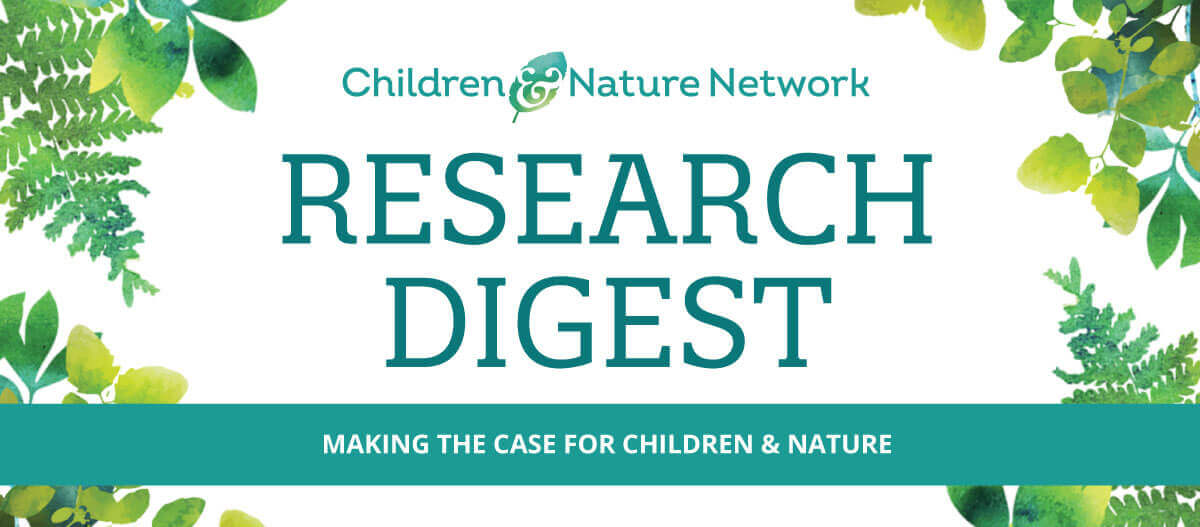Relaxation and Stress Reduction Benefits of Nature
The benefits of nature for children include the promotion of resilience in dealing with stress. Many children look to nature as a place where they can relax.
Young children find time in nature relaxing
Children’s accounts of how they experience relaxation indicate that place, play, and sensory-rich factors influence how and where they relax. Children in this study identified nature and home as common places for experiencing relaxation. They referred to watching, touching and feeling nature, and noted how these experiences triggered positive feelings and emotional responses, including relaxation.
Cooke et al. 2020. “Lie in the grass, the soft grass”: Relaxation accounts of young children attending childcare. Access study.
Nearby nature helps children cope with adversity
This study, involving 172 participants, found that children with more access to natural areas as well as more perceived nature in the home and school environment had lower stress levels than would be expected if nature was not acting as a protective factor. The results of this study suggest that nearby nature bolsters children´s resilience in dealing with stress.
Corraliza, Collado, & Bethelmy, 2012. Nature as a moderator of stress in urban children. Access study.
Even a short nature experience can reduce stress for urban residents
The aim of this study was to identify how much time in nature is needed to reduce stress. Salivary biomarkers were used to measure stress levels. The study was conducted over a period of eight weeks and was based on salivary readings and nature engagement logs provided by 36 urban residents. Results showed that nature engagement was most effective when the experience lasted 20 – 30 minutes.
Hunter, Gillespie, & Chen, 2019. Urban nature experiences reduce stress in the context of daily life based on salivary biomarkers. Access study.
Rural Canadian children are aware of the mental health benefits of nature engagement and are pro-active in turning to nature to experience these benefits
Eighty-four rural Canadian children (age 9-14) participated in small group interviews focusing on nature and its benefits. While children were aware of such nature-related physical health benefits as exercise, they were also aware of the emotional or mental health benefits associated with nature. They shared ideas on how they actively used nature to promote positive feelings.
Tillman et al. 2019. ‘Nature makes people happy, that’s what it sort of means:’ Children’s definitions and perceptions of nature in rural Northwestern Ontario. Access study.
Nearby nature can reduce stress in children
To examine whether vegetation near the residential environment might buffer or moderate the impact of stressful life events on children’s psychological well-being, data were collected from 337 rural children in Grades 3 through 5. Results showed that the impact of life stress was lower among children with high levels of nearby nature than among those with little nearby nature.
Wells & Evans, 2003. Nearby nature: A buffer of life stress among rural children. Access study.
Park prescriptions may be effective in addressing pediatric stress and resilience
Every increase in weekly park visits by low income families led to a significant increase in resilience as reported by the children. As resilience scores increased, child stress decreased, regardless of level of adverse childhood events (ACEs). Resilience – a balanced response to stress – may over the course of a lifetime explain why nature impacts multiple pathways and has multiple health benefits.
Razani, et al. (2019). Clinic and park partnerships for childhood resilience: A prospective study of park prescriptions. Access study.






